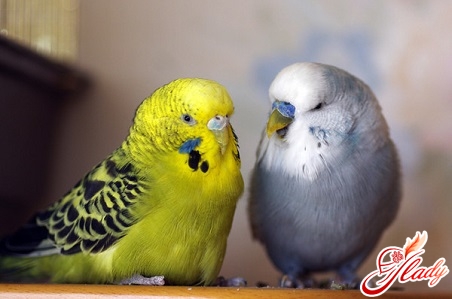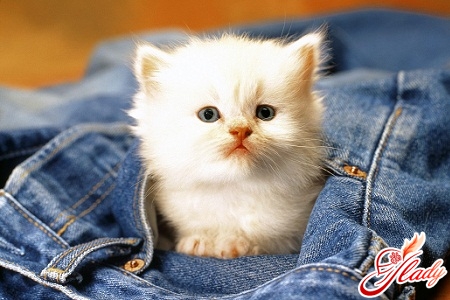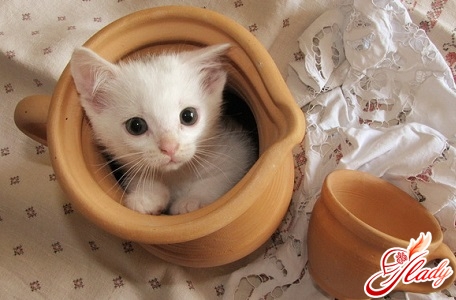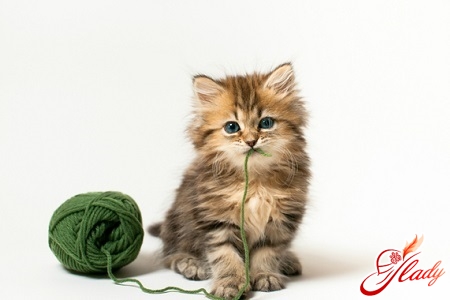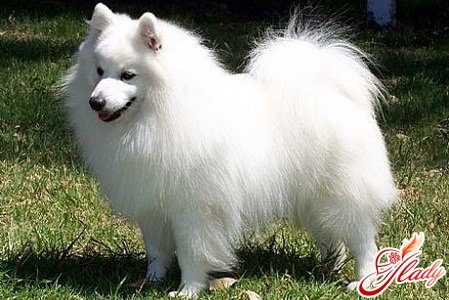 Times change, tastes change, fashion changes.Including the fashion for pets. And if Chekhov's "lady with a dog" was inseparable from the German Spitz, then modern ladies are very interested in the Japanese Spitz. "What's the difference," you ask, "a Spitz is a Spitz: a fluffy, sharp-nosed, cheerful little dog." That's true, but Spitz are a whole group of breeds of decorative dogs. Each breed of Spitz has its own history, its own standard and its own characteristics. They have a lot in common, but also many differences. For example, what is the Japanese Spitz that is fashionable today?
Times change, tastes change, fashion changes.Including the fashion for pets. And if Chekhov's "lady with a dog" was inseparable from the German Spitz, then modern ladies are very interested in the Japanese Spitz. "What's the difference," you ask, "a Spitz is a Spitz: a fluffy, sharp-nosed, cheerful little dog." That's true, but Spitz are a whole group of breeds of decorative dogs. Each breed of Spitz has its own history, its own standard and its own characteristics. They have a lot in common, but also many differences. For example, what is the Japanese Spitz that is fashionable today?
Origin of the breed
According to zoologists and dog breedersThe Japanese Spitz comes from northern dogs, or more precisely from the Samoyed Laika. It was from them that, as a result of painstaking selection, a new breed was obtained - the Japanese Spitz or Samoyed Laika in miniature. This breed began to form at the end of the nineteenth century in Japan, and in 1948 it was nationally recognized by the Cynological Union. The first officially registered representative of the breed was a Japanese Spitz named Hakuriyo, who was born in the summer of 1947. And in 1959, the Japanese Spitz Cynological Association was founded in Japan, uniting breeders and lovers of this breed. The Japanese Spitz breed, which has long been popular and beloved in Japan, is becoming increasingly popular in other countries of the world. And our country is no exception: today the demand for these dogs is quite high.
Breed Standard
According to the breed standard, JapaneseThe Spitz should be of a strong and flexible build, from twenty-five to thirty-eight centimeters high and weighing from five to ten kilograms. The head is round with triangular ears, a pointed muzzle, a miniature black nose, black thick lips, almond-shaped dark eyes with a black rim. The body of the Japanese Spitz is strong, with a well-defined withers and neck, a wide chest and loin and a tucked-up belly. The paws are muscular, with rounded pasterns and fleshy pads. The tail is curled into a ring and lies tightly against the back. The coat is straight, thick, long with a soft undercoat. On the muzzle, front legs and ears the coat is shorter than on the body. On the neck and chest there is a luxurious fluffy collar, and on the hind legs - feathering. The coat color of the Japanese Spitz is exclusively white, without spots or markings.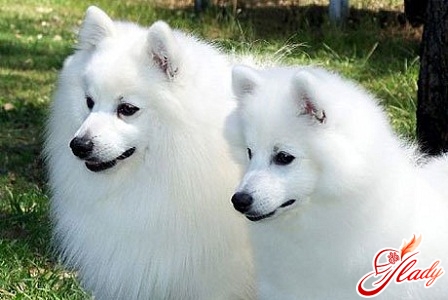
Features of the breed
The Japanese Spitz is a companion dog.He has a cheerful disposition, playful and good-natured. At the same time, these little dogs are quite stubborn, so when raising them, the owner needs to be persistent and patient. However, with the right approach, it is easy to achieve obedience from them, since Japanese Spitz are naturally smart and devoted to the owner. These dogs have an innate protective instinct, they are distrustful of strangers, but get along well with other pets. They are easy to train, they treat all family members tenderly and lovingly and do not cause any special problems in maintenance. For example, the Japanese Spitz is neat and clean, rarely barks, almost never chews furniture and shoes (except in puppyhood). The Japanese Spitz dog is perfect for keeping in an apartment. It will not be a burden for the elderly and will always find a common language with children. In addition to all their positive qualities, these dogs have excellent immunity, rarely get sick and are not prone to allergies. The luxurious coat of the Japanese Spitz requires constant but easy care. The fact is that dirt that gets on the coat does not leave a trace after drying. It is simply shaken off, and the coat remains clean. This is the unique "dirt-repellent" property of these dogs. And the main care for their coat consists only of periodic combing. In general, the breed description for the Japanese Spitz dog is as follows. It is miniature, decorative, has a spectacular appearance and a "sociable" character. It will perfectly cope with the role of a pet, brighten up the loneliness of elderly people and add joyful moments to the life of a large family. It will not cause unnecessary trouble in care and maintenance, but with its miniature size it will become an excellent guard. What an interesting breed the Japanese Spitz is. And is not this what you dreamed of?




